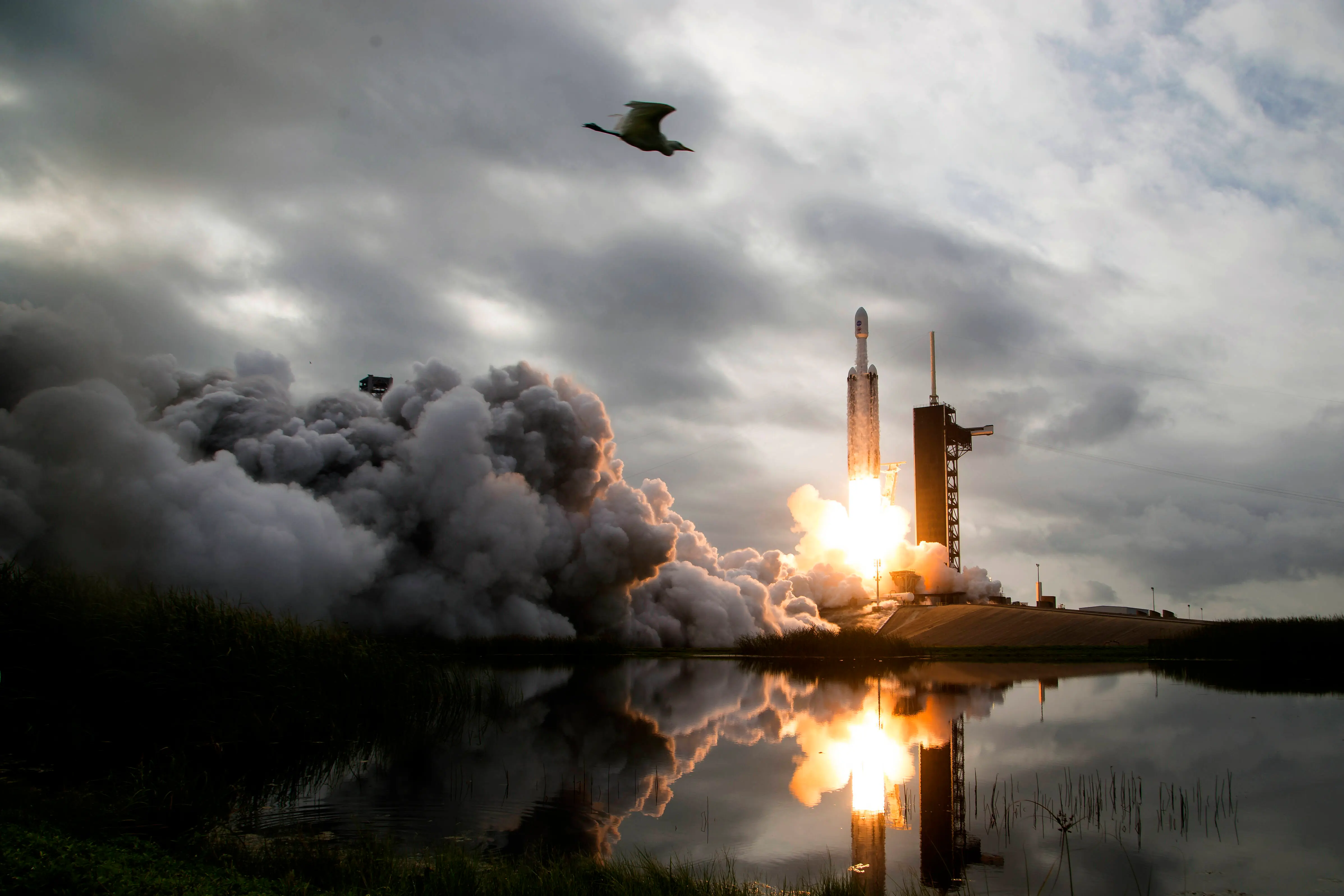Did NASA’s exoplanet balloon really crash in Texas? Scientist behind the mission explains what happened
-
 CAPE CANAVERAL, FLORIDA - OCTOBER 13: In this handout provided by NASA, a SpaceX Falcon Heavy rocket with the Psyche spacecraft onboard is launched from Launch Complex 39A, October 13, 2023 at NASA's Kennedy Space Center in Cape Canaveral, Florida. NASA's Psyche spacecraft will travel to a metal-rich asteroid by the same name orbiting the Sun between Mars and Jupiter to study its composition. The spacecraft also carries the agency's Deep Space Optical Communications technology demonstration, which will test laser communications beyond the Moon. (Photo by Aubrey Gemignani/NASA via Getty Images)
CAPE CANAVERAL, FLORIDA - OCTOBER 13: In this handout provided by NASA, a SpaceX Falcon Heavy rocket with the Psyche spacecraft onboard is launched from Launch Complex 39A, October 13, 2023 at NASA's Kennedy Space Center in Cape Canaveral, Florida. NASA's Psyche spacecraft will travel to a metal-rich asteroid by the same name orbiting the Sun between Mars and Jupiter to study its composition. The spacecraft also carries the agency's Deep Space Optical Communications technology demonstration, which will test laser communications beyond the Moon. (Photo by Aubrey Gemignani/NASA via Getty Images)An online rumor circulated last week that suggested that one of NASA's high-flying research balloons, used to hunt for exoplanets, had crashed in Texas. But the leader of the mission has since corrected that reports were inaccurate. The balloon, one of NASA's attempts to research planets outside our own solar system, safely completed its mission and landed where it should have.
Reports of dangerous "crash" circulated online
The misconception started when some social media platforms and local media reported that NASA's exoplanet balloon "crashed" in rural Texas after a malfunction. The report went around on the internet immediately, with some people posting pictures of what they said was balloon wreckage on the ground.
Nonetheless, researchers who are part of the project, maintain that all these assertions were not true. The balloon did not crash or abort in flight. Rather, it did a planned descent after successfully collecting atmospheric information for its purpose.
What the balloon was designed to do
The balloon used in this mission was part of NASA’s research balloon program. These are very large balloons filled with helium that carry science instruments high into the sky — even up to 130,000 feet above the Earth. They help scientists study space in a cheaper and easier way than using rockets or satellites.
This balloon had tools designed to study how light moves through and around the atmospheres of planets. Testing these tools at high altitudes helps scientists improve the methods they use to study planets outside our solar system, known as exoplanets.
Scientist explains what really happened
The project’s lead scientist, Dr. Jacob Bean from the University of Chicago, said (as per space.com) that the balloon did not crash. Instead, it was brought down on purpose after the mission was complete.
The landing happened in a planned area in Texas, following NASA’s normal recovery steps. Dr. Bean explained that confusion started when pictures of the deflated balloon were shared online without explanation.
Even though it looked like the balloon had fallen in an empty field, that was exactly what was supposed to happen. It was part of the safe landing process. Dr. Bean said the mission went as planned, the instruments worked well, and all the data was collected successfully.
A routine part of NASA’s balloon program
NASA's scientific balloons are made to conduct controlled flights that may last a few hours or several weeks. Once the goals of the mission are accomplished, the balloon is intentionally vented, which sends it slowly back down to Earth. Ground crews recover the gear and find the balloon.
These types of missions are important for the testing of technology that will eventually be applied in space telescopes and other observation equipment. They enable scientists to collect data on how an instrument performs in near-space environments, which aids in the development of future space missions.
What the mission achieved
Although individual findings from this latest flight are not yet publicly announced, scientists report the instruments operated well and recorded valuable information regarding light absorption in the atmosphere.
These findings can assist with enhancing further investigations of exoplanets and the search for potentially habitable planets outside our planet. NASA has launched balloon flights for decades, employing them to fly tests of everything from cosmic radiation detectors to telescope pieces. With each flight, the body of evidence justifying space exploration and technology advancement builds.
NASA reported no damage or technical malfunction associated with the mission. The agency asserted that the ballast-induced descent of the balloon was in line with their intended routine, and recovery teams have retrieved the instruments for data processing.
Dr. Bean further stated that although the rumors spread online rapidly, the mission is still an example of how the low-cost balloon experiments by NASA continue to push the limits of science.
"Everything worked as it should," he said, explaining that there was no crash and that the mission was successful.
In the meantime, the agency is still studying data collected, which may be useful in future endeavors to have a better understanding of the atmospheres of distant planets.
TOPICS: NASA
- NASA’s Webb telescope detects the earliest known supernova from 730 million years after the Big Bang
- NASA completes assembly of the Nancy Grace Roman Space Telescope
- Supermassive black hole unleashes ultra-fast winds moving at 20% the speed of light
- NASA missions identify unusual Gamma Ray burst with record duration